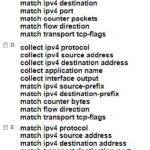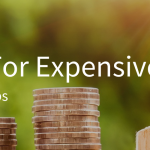Our Cisco 300-101 dumps are updated and reviewed thoroughly by the concerned professionals. We have over 95% success rate so far with these dumps. I am planning to take the following most popular ROUTE https://www.pass4itsure.com/300-101.html dumps pdf training for Microsoft 300-101 exam video certification.
Exam Code: 300-101
Exam Name: Implementing Cisco IP Routing (ROUTE v2.0)
Updated: Aug 11, 2017
Q&As: 402
[100% Vaild Cisco 300-101 Dumps Google Drive]: https://drive.google.com/open?id=0BwxjZr-ZDwwWWDdYaFM0SVFwMTA
[100% Vaild Microsoft 070-347 Dumps Google Drive]: https://drive.google.com/open?id=0BwxjZr-ZDwwWdkVZWTJKYnNWUzA
Keeping in view, we offer a pass guarantee in the very first attempt of appearing in the Cisco 300-101 dumps.

Pass4itsure Latest and Most Accurate Cisco 300-101 Dumps Exam Q&As:
QUESTION 1
Workflows expressed in Oozie can contain:
A. Sequences of MapReduce and Pig. These sequences can be combined with other actions including
forks, decision points, and path joins.
B. Sequences of MapReduce job only; on Pig on Hive tasks or jobs. These MapReduce sequences can
be combined with forks and path joins.
C. Sequences of MapReduce and Pig jobs. These are limited to linear sequences of actions with
exception handlers but no forks.
D. Iterntive repetition of MapReduce jobs until a desired answer or state is reached.
300-101 exam Correct Answer: A
Explanation
Explanation/Reference:
Explanation: Oozie workflow is a collection of actions (i.e. Hadoop Map/Reduce jobs, Pig jobs) arranged in
a control dependency DAG (Direct Acyclic Graph), specifying a sequence of actions execution. This graph
is specified in hPDL (a XML Process Definition Language).
hPDL is a fairly compact language, using a limited amount of flow control and action nodes. Control nodes
define the flow of execution and include beginning and end of a workflow (start, end and fail nodes) and
mechanisms to control the workflow execution path ( decision, fork and join nodes).
Workflow definitions
Currently running workflow instances, including instance states and variables
Reference: Introduction to Oozie
Note: Oozie is a Java Web-Application that runs in a Java servlet-container – Tomcat and uses a database
to store:
QUESTION 2
You are developing a combiner that takes as input Text keys, IntWritable values, and emits Text keys,
IntWritable values. Which interface should your class implement?
A. Combiner <Text, IntWritable, Text, IntWritable>
B. Mapper <Text, IntWritable, Text, IntWritable>
C. Reducer <Text, Text, IntWritable, IntWritable>
D. Reducer <Text, IntWritable, Text, IntWritable>
E. Combiner <Text, Text, IntWritable, IntWritable>
Correct Answer: D
Explanation
QUESTION 3
Which TWO of the following statements are true regarding Hive? Choose 2 answers
A. Useful for data analysts familiar with SQL who need to do ad-hoc queries
B. Offers real-time queries and row level updates
C. Allows you to define a structure for your unstructured Big Data
D. Is a relational database
300-101 dumps Correct Answer: AC
Explanation
QUESTION 4
You need to create a job that does frequency analysis on input data. You will do this by writing a Mapper
that uses TextInputFormat and splits each value (a line of text from an input file) into individual characters.
For each one of these characters, you will emit the character as a key and an InputWritable as the value.
As this will produce proportionally more intermediate data than input data, which two resources should you
expect to be bottlenecks?
A. Processor and network I/O
B. Disk I/O and network I/O
C. Processor and RAM
D. Processor and disk I/O
Correct Answer: B
Explanation
QUESTION 5
Which one of the following classes would a Pig command use to store data in a table defined in HCatalog?
A. org.apache.hcatalog.pig.HCatOutputFormat
B. org.apache.hcatalog.pig.HCatStorer
C. No special class is needed for a Pig script to store data in an HCatalog table
D. Pig scripts cannot use an HCatalog table
300-101 pdf Correct Answer: B
Explanation
QUESTION 6
All keys used for intermediate output from mappers must:
A. Implement a splittable compression algorithm.
B. Be a subclass of FileInputFormat.
C. Implement WritableComparable.
D. Override isSplitable.
E. Implement a comparator for speedy sorting.
Correct Answer: C
Explanation
Explanation/Reference:
Explanation: The MapReduce framework operates exclusively on <key, value> pairs, that is, the framework
views the input to the job as a set of <key, value> pairs and produces a set of <key, value> pairs as the
output of the job, conceivably of different types.
The key and value classes have to be serializable by the framework and hence need to implement the
Writable interface. Additionally, the key classes have to implement the WritableComparable interface to
facilitate sorting by the framework.
Reference: MapReduce Tutorial
QUESTION 7
What types of algorithms are difficult to express in MapReduce v1 (MRv1)?
A. Algorithms that require applying the same mathematical function to large numbers of individual binary
records.
B. Relational operations on large amounts of structured and semi-structured data.
C. Algorithms that require global, sharing states.
D. Large-scale graph algorithms that require one-step link traversal.
E. Text analysis algorithms on large collections of unstructured text (e.g, Web crawls).
300-101 vce Correct Answer: C
Explanation
Explanation/Reference:
Explanation: See 3) below.
Limitations of Mapreduce ?where not to use Mapreduce
While very powerful and applicable to a wide variety of problems, MapReduce is not the answer to every
problem. Here are some problems I found where MapReudce is not suited and some papers that address
the limitations of MapReuce.
1. Computation depends on previously computed values If the computation of a value depends on
previously computed values, then MapReduce cannot be used. One good example is the Fibonacci series
where each value is summation of the previous two values. i.e., f(k+2) = f(k+1) + f(k). Also, if the data set is
small enough to be computed on a single machine, then it is better to do it as a single reduce(map(data))
operation rather than going through the entire map reduce process.
2. Full-text indexing or ad hoc searching
The index generated in the Map step is one dimensional, and the Reduce step must not generate a large
amount of data or there will be a serious performance degradation. For example, CouchDB’s MapReduce
may not be a good fit for full-text indexing or ad hoc searching. This is a problem better suited for a tool
such as Lucene.
3. Algorithms depend on shared global state
Solutions to many interesting problems in text processing do not require global synchronization. As a
result, they can be expressed naturally in MapReduce, since map and reduce tasks run independently and
in isolation. However, there are many examples of algorithms that depend crucially on the existence of
shared global state during processing, making them difficult to implement in MapReduce (since the single
opportunity for global synchronization in MapReduce is the barrier between the map and reduce phases of
processing)
Reference: Limitations of Mapreduce ?where not to use Mapreduce
QUESTION 8
How are keys and values presented and passed to the reducers during a standard sort and shuffle phase
of MapReduce?
A. Keys are presented to reducer in sorted order; values for a given key are not sorted.
B. Keys are presented to reducer in sorted order; values for a given key are sorted in ascending order.
C. Keys are presented to a reducer in random order; values for a given key are not sorted.
D. Keys are presented to a reducer in random order; values for a given key are sorted in ascending order.
300-101 exam Correct Answer: A
Explanation
Explanation/Reference:
Explanation: Reducer has 3 primary phases:
1. Shuffle
The Reducer copies the sorted output from each Mapper using HTTP across the network.
2. Sort
The framework merge sorts Reducer inputs by keys (since different Mappers may have output the same
key).
The shuffle and sort phases occur simultaneously i.e. while outputs are being fetched they are merged.
SecondarySort
To achieve a secondary sort on the values returned by the value iterator, the application should extend the
key with the secondary key and define a grouping comparator. The keys will be sorted using the entire key,
but will be grouped using the grouping comparator to decide which keys and values are sent in the same
call to reduce.
3. Reduce
In this phase the reduce(Object, Iterable, Context) method is called for each <key, (collection of values)> in
the sorted inputs.
The output of the reduce task is typically written to a RecordWriter via TaskInputOutputContext.write
(Object, Object).
The output of the Reducer is not re-sorted.
Reference: org.apache.hadoop.mapreduce, Class
Reducer<KEYIN,VALUEIN,KEYOUT,VALUEOUT>
QUESTION 9
Which best describes how TextInputFormat processes input files and line breaks?
A. Input file splits may cross line breaks. A line that crosses file splits is read by the RecordReader of the
split that contains the beginning of the broken line.
B. Input file splits may cross line breaks. A line that crosses file splits is read by the RecordReaders of
both splits containing the broken line.
C. The input file is split exactly at the line breaks, so each RecordReader will read a series of complete
lines.
D. Input file splits may cross line breaks. A line that crosses file splits is ignored.
E. Input file splits may cross line breaks. A line that crosses file splits is read by the RecordReader of the
split that contains the end of the broken line.
300-101 dumps Correct Answer: A
Explanation
Explanation/Reference:
Reference: How Map and Reduce operations are actually carried out
In another case, if you do not pass by using our “Implementing Cisco IP Routing (ROUTE v2.0) ” 300-101 dumps, you will be compensated with a full refund without any https://www.pass4itsure.com/300-101.html dumps question asked.


